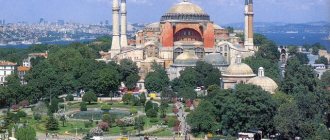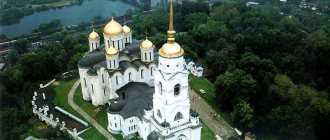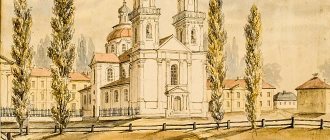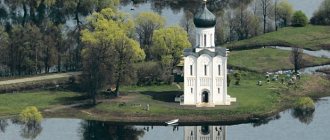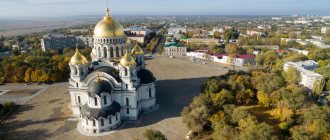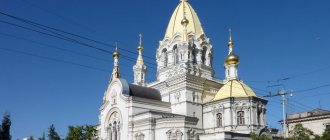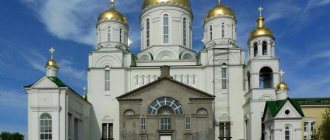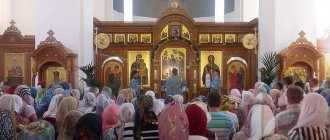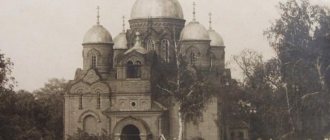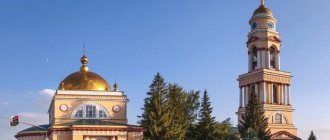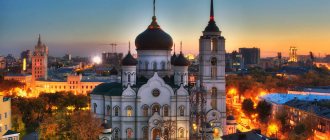St. Sophia Cathedral in Novgorod. Location, directions
The age of the central Orthodox monument of Veliky Novgorod is approximately 1000 years. The temple is part of the Novgorod Kremlin complex, and is located in its oldest corner - on the territory of the Vladychny Court.
Rising on the left bank of the Volkhov River, St. Sophia Cathedral attracts admiring glances: a majestic and huge structure, built of snow-white stone with five domes, similar to the helmets of Russian soldiers. One dome in the center is covered with gold, the rest are painted with lead paint.
You can get to the religious monument by buses: No. 7, 7A, 17, 17A, 26. These routes will take you to Sennaya Square. To get to the Hagia Sophia, you need to enter the Kremlin near the adjacent park. And then walk along the alley for 100 m. On the left side you can see the St. Sophia Cathedral, and very close by is a monument dedicated to the 1000th anniversary of Russia.
The schedule of services does not depend on what day of the week:
| Morning service | at 10:00 |
| Evening service | at 18:00 (except on Monday and Tuesday); |
| Thursday evening | service and prayer service to Nikita of Novgorod (if there is no other holiday on Friday) |
| Sunday evening | service and prayer service at the icon “The Sign” |
History of Hagia Sophia
At first, the temple, built of porous limestone slabs, had lighter and warmer decoration both inside and outside. The rough stone material of the cathedral was given a refined appearance in the 12th century, and the interior walls were decorated with painted icons and rich utensils.
Over the many years of its existence, St. Sophia Cathedral has undergone reconstruction and changes. Open-air exhibitions were held, which did not pass the test of severe winter frosts.
As a result, the temple began to look stern and “gloomy” (and later the “Golden” porch extension appeared), went 1.5 meters deep into the ground and was robbed by the henchmen of Ivan the Terrible. They took away priceless icons and other precious objects and destroyed the Korsun Gate.
Modified in the Middle Ages and destroyed by shells of the fascist invaders (the Germans removed the wooden carved elements of the temple and the iconostasis from the cathedral, which were later returned), the Orthodox Novgorod Cathedral began to acquire a stern and gloomy appearance.
The interior decoration is represented by faded frescoes from the 11th century and icons from the 14th to 16th centuries, many of which have not survived. This happened because poor-quality restoration was carried out in the St. Sophia Cathedral in the first years of the 20th century, and then the First World War began.
However, on the walls of the cathedral, where the old putty was preserved, historians discovered notes made by parishioners dating back to the 11th-13th centuries. The inscriptions told about what was happening in the city, how people prayed in those days. Further research revealed mosaic elements that decorated the altar pillars and parts of the floor.
Once upon a time, Hagia Sophia possessed an invaluable library, which consisted of unique records, historical chronicles, scientific and medical treatises. Part of this collection has survived to this day.
In the St. Sophia Cathedral there are:
- Tombs of the Holy Princess Anna (she was the wife of Yaroslav the Wise).
- Prince Vladimir with his wife Alexandra.
- Princes Mstislav and Feodor.
- Priests Nikita and John.
And many more princes, monks and other nobility found their final refuge here.
During the time when the country was ruled by the Bolsheviks, the cathedral was closed for worship and an open exhibition was made inside it, which was supposed to emphasize how richly the clergy lived, which was very condemned by the authorities. All items of great value were used as exhibits.
The damage received during the war was repaired in the St. Sophia Cathedral immediately after its end. Until the 90s, the temple served as a branch of the Novgorod museum complex. In the summer of 1991, the solemn return of the Hagia Sophia to the Orthodox Church by the Moscow Patriarch took place.
History of the foundation of the Cathedral
The Novgorod St. Sophia Church is the oldest surviving monument of ancient Russian architecture in our country. There is evidence that before the construction of the stone cathedral, there was a wooden St. Sophia Church in the city. There is no archaeological evidence of this fact. But in the NPV - the First Novgorod Chronicle, which describes the period from 1016 to 1330, it is mentioned that St. Sofia was destroyed by fire in 1049 “at 4 March, on the Sabbath day.” The chronicle also states that the original temple was “13 the top of the people” and stood above Volkhov on “Piskuple Street”. A number of historians doubt that the wooden Sophia existed, and suggest this record is a figment of the chronicler’s imagination.
The first temple and its design
The stone cathedral, which became a symbol of Veliky Novgorod and its freedom, began to be built in 1045 and was completed in 1050 or 1052. Architects and workers from Kyiv and Byzantium worked on the construction. First, all surfaces of the walls were whitewashed, with the exception of the drums and curved apses. They were left covered with tsemyanka (crushed brick chips with lime). Thus, the architects tried to externally reproduce the richly decorated temples of Constantinople, the walls of which were covered with marble, and the curved elements were covered with frescoes and mosaics. Having grown in just five years, the temple was huge according to the imagination of the residents of Ancient Novgorod. The 40-meter structure, rising above the wooden huts and oak fortress walls, captured the imagination of many merchants who came to Novgorod.
In all ten centuries of the church's existence, it has never been rebuilt. Fires and wars caused damage that only required repairs. After various social and natural disasters, the domes of the St. Sophia Cathedral were covered with lead and the walls with plaster. In the 15th century, under Archbishop Ivan Kalik, the central dome began to be gilded.
Fate in the Soviet years
During the Soviet historical period, divine services were held in the St. Sophia Cathedral for some time. At the same time, the temple was mercilessly plundered by the new authorities. Valuables were removed from storage facilities. Some of them disappeared without a trace. Others were exhibited in foreign museum exhibitions and private collections. In the 1920s, services were stopped, and the authorities opened a museum of atheism there. During the war, the Novgorod Cathedral came under fire and was captured and devastated by the Germans. It was badly damaged by bombing. After the Victory, the temple was restored, and it became the center of secular cultural life in Novgorod.
Current state
In 1991, the transfer of St. Sophia to the Russian Orthodox Church took place. The fact that the transfer took place is a great merit of Archbishop Lev of Novgorod (Tserpitsky). Before the event, on the initiative of the archbishop, a public council was created, the purpose of which was to restore and ensure the continued preservation of Sofia as a most valuable historical monument.
Now the temple is open to believers from 8 a.m. to 8 p.m. Services are held at 10 a.m. and 6 p.m.
Architectural features of the temple
The foundation of the Novgorod St. Sophia Cathedral took place on May 21 (according to the old calendar in June) 1045. On this day, the first stone was laid for the construction of the temple and the Day of the Holy Apostles Helen and Constantine was celebrated.
As ancient chronicles say, on this day the very first (wooden) Orthodox Church of the Wisdom of God was burned. It is known from other sources that the first Sofia Cathedral burned down after the construction of the Novgorod St. Sophia Cathedral was completed, but historians do not confirm any of these versions.
Meanwhile, the Hagia Sophia Cathedral, the architecture of which was represented in the Byzantine style, was already rising on Kyiv soil. It can be noted that the Novgorod and Kiev cathedrals have similar features.
This is explained by the fact that in the 11th century stone construction was not so developed, and, accordingly, the technology and style were the same. To build the cathedral, most likely, Prince Vladimir hired Kyiv craftsmen or builders from Constantinople.
Building materials, stone laying and plinths - the identity of the Kyiv Cathedral can be traced in everything. Even the way the stones were fastened together was exactly repeated: a mixture of lime mortar and crushed brick.
Both cathedrals have five-nave rooms with choirs, high towers and long galleries.
The Hagia Sophia Cathedral in Novgorod included a separate room with an altar for worship; previously there were three chapels here. They were connected into one building using additional galleries.
This volumetric style in architecture became a distinctive feature of the Novgorod St. Sophia Church. These include the high ceilings of the central part of the St. Sophia Cathedral and the organization of roofing floors. In order for all the combined buildings to be on the same level, the architects built additional walls and reinforced them with supporting pillars and vaults (akbutans).
Changing the volume of the dome space and increasing the heights in other rooms were not traditional for Kyiv or Byzantine architecture. The transformed Novgorod St. Sophia Cathedral, with its elongated forms, became noticeably different from other churches of that time.
Inside the walls of Hagia Sophia, voices were used - ceramic vessels or pots. To improve the acoustics of the interior of the temple, they were located in a certain way. The round openings of the vessels were mainly directed towards the outside of the temple, but sometimes the opposite placement was also intended.
Such a structural solution within the walls of a voluminous cathedral helped solve problems with acoustics and eliminate the appearance of echoes. Voice speakers performed another important function.
Since amphorae and pots were round in shape, the load-bearing capacity of the walls increased several times. And due to the empty space inside the voice boxes, the weight of the heavy dome was reduced, and at the same time, the load from the huge structure on the foundation, support pillars and arches was reduced.
The Hagia Sophia Cathedral in Novgorod is decorated with 5 domes, and the sixth rises above the tower with a staircase, which is located in the western part at the southern entrance. The domes externally resemble helmets that protected the heads of ancient Russian warriors. On the central dome, which was gilded in the 15th century, there is a lead dove. He has been looking at the city for a thousand years.
Only in the 17th century did the first belfry appear in the temple. In the Novgorod Cathedral you can see an exhibition of bells. And at the same time see the view of the city from the height of the bell tower.
Technical features of the cathedral
St. Sophia Cathedral in Novgorod is one of the few five-nave cross-domed churches built in the 11th century. Later, the construction of churches of this type was not practiced in Rus'. The temple is made in the Byzantine style. The side asps of the temple are made in the shape of a pentagon, the central one is round. Wide two-story galleries encircle the building on three sides. Historians believe that the galleries were built simultaneously with the building of the temple. The structure of the building is pyramidal, with 6 domes.
Together with the galleries, the cathedral has a rectangular shape (34.5x39.3 m). The height of the building at the central chapter is 38 m (without the cross). During the construction of the temple, massive walls were laid. Their thickness is 1.2 meters. The material for the walls was limestone of different colors. To fasten the stones, a mortar of lime with the addition of crushed brick was used. Only the side facing the surface of the facade was finished off the stones.
Brick was chosen as the material for the arched openings and vaults. The internal walls in the area of the main apse and in the sails are lined with round-shaped ceramic vessels (voices). During construction, some voice boxes were specially made open to the interior. Thus, Russian craftsmen got rid of the echo that was undesirable for the temple. Another advantage of the presence of hollow objects in the masonry was the reduction of the load from the weight of the drum on the girth arches.
The interior of the St. Sophia Cathedral is very similar to the Kiev temple, only there are slight differences in proportions.
Interior of the temple
Paintings on the interior walls of the church appeared in the 11th century. The famous painting “Constantine and Helena”, which was created by Byzantine artists, has survived to this day.
During the restoration of the temple in the 19th century, specialists removed the old layer of putty and found Emperor Constantine and his mother painted in full height. This fresco is unique because of the technology with which it was created. She painted on dry plaster.
The next paintings of the Orthodox church were carried out in the 12th century. Only minor parts of the frescoes on the central drum could survive to this day, which depicted three-meter figures of seers. On the altar there was a mosaic with images of saints. In some corridors of the church you can see fragments of images of Jesus Christ, the Virgin Mary and John the Baptist.
After the 12th century, only two icons survived:
- Apostles Peter and Paul;
- Savior on the Throne.
Hagia Sophia - the icon of the Savior on the throne
There are inscriptions left by architects and parishioners on the walls of the cathedral. Even wall paintings by icon painters, which in modern art are called “graffiti,” were also present inside the temple. It is known that in the 12th century the novice Stefan, together with the artists Mikula and Radko, was engaged in decorating the church.
Interesting fact! Treasures and hiding places were hidden within the walls of the shrine, where the numerous wealth of wealthy townspeople of that time, including Prince Vladimir himself, was kept.
According to legends, it was his “burial place” that was found by Ivan the Terrible, who learned about the treasure from someone unknown. In addition to the personal treasure, the treasury of Veliky Novgorod was also preserved in the caches of the temple at that time.
Interesting Facts
- The cathedral has the famous ancient Magdeburg or Korsun Gates, which are opened only on major holidays. Once upon a time this was the main gate through which Christians entered the temple. At one time, the bronze gates were restored by the craftsman Abraham and installed in the western portal.
- In the 19th century, graffiti dating from the 11th to the beginning of the 12th centuries was discovered on the walls of the cathedral.
- St. Sophia Cathedral was depicted on the Russian 5 ruble banknote issued in 1997.
Paintings and icons of St. Sophia Cathedral
As soon as the Hagia Sophia Cathedral in Veliky Novgorod was built, artists immediately began decorating and painting it. Only parts of the central dome frescoes with images of seers and cherubs have survived to this day. The unique painting with the image of Christ Pantocrator in the center of the dome was destroyed by a bomb that hit the cathedral during hostilities in the 40s.
Another discovery for historians was the image of the apostles Constantine and Helen discovered under modern paintings in the Martiryevskaya porch. Since this fresco was painted with pale colors and did not have clear lines, it can be assumed that it was a rough draft for a future mosaic.
Those paintings that dominate the interior decoration of the Novgorod St. Sophia Cathedral were created at the end of the 19th century.
The Novgorod Orthodox Church is famous for its iconostases. The central wall is decorated with icons of Sophia and the Wisdom of God, dating back to the 15th-16th centuries. They are dominated by red and scarlet shades, which quite symbolically conveys the meaning of the sacrifice that Christ made for people.
The Nativity iconostasis is headed by an icon of the Virgin Mary, originally from Tikhvin (16th century). She was present at the conclusion of a peace agreement between Russia and Sweden in 1617. By order of Princess Sofia, the icon was hidden in a special metal vestment - a chasuble. Also here is the icon of the “Savior on the Throne” of the 14th century and other images of the 16th-19th centuries.
The famous and most important shrine of the Novgorod Church of St. Sophia is the image of the Mother of God on the “Sign” icon, which is highly valued among the Orthodox. In the image of the icon, the Mother of God spreads out her arms with her palms facing people.
This position of her hands indicated that she was reading a protective prayer. Icon painters call the style of painting the Mother of God Oranta. They say that the icon helped withstand the siege of Prince Andrei in 1170.
Interiors and relics of the Novgorod temple
The first impression of those entering the St. Sophia Cathedral in Veliky Novgorod in most cases is a feeling of some cramped space. It seems so not so much from the considerable number of visitors, but from the disproportion of the area and volume inside the building. The high height of the ceilings in the passage contrasts with its small width, which is further reduced due to the candlesticks placed under the images.
The church bench located on the path of visitors does not add space either; although it is located in a niche, it limits the passage with a counter. But the range of goods here is quite diverse, from religious literature and symbols to holy images of a wide variety of sizes and quality of work. The only free space left is the space under the ceiling, illuminated by the light of the chandeliers.
Visitors experience different sensations near the altar iconostasis, where it is much freer. The first and main impression for most is the obvious, even excessive modesty of the design. I wouldn’t dare call it scarcity, but the muted colors, the lack of significant decor, gilding, and bright details are noticeable. However, modesty is not a vice; perhaps this was the case in the old days.
The altar iconostasis of the temple contains a number of rare and especially revered icons, about which prudent visitors found information in advance. It is near these images that visitors who want to get help or solve problems concentrate. First of all, these are the icons of Sophia the Wisdom of God, the Tikhvin Mother of God and the icon of the Mother of God of the Sign placed in a cabinet in front of the iconostasis.
Features of Sofia Novgorod
The St. Sophia Cathedral in Veliky Novgorod looks very attractive if you look towards the main dome. The dizzying height is mesmerizing, the feeling is enhanced by the vertical projections of the walls. It seems that the upper part of the structures preserved fragments of ancient paintings, but the central image of Christ was knocked out by a fascist shell and was never restored.
What distinguishes the St. Sophia Cathedral in Veliky Novgorod from other Orthodox churches is something else that is almost elusive, at the level of a subconscious guess. The iconostasis, separating the altar space from the public space, seems alien in this setting. And this is true, it was erected later than the consecration of the cathedral, after the final demarcation of Catholics and Orthodox Christians to the level of mutual curses.
The contradictions between the branches of one religion stemmed from the desire for dominance, common among politicians, but unsuitable for the servants of God. The division of the Roman Empire into Western and Eastern, which later became Byzantium, gave rise to contradictions not only between states. In the foreseeable future, this conflict will be a thousand years old; will Christians never unite?
Holy relics and customs
In addition to the already mentioned miraculous icons, the St. Sophia Cathedral in Veliky Novgorod preserves a number of relics of Orthodox saints. The first to rest here was the wife of Yaroslav the Wise Anna, the mother of the builder of the temple. The death of Vladimir Yaroslavich immediately after the consecration has already been mentioned, but he was only 32 years old. Using the example of this person, we show how and in what way the St. Sophia Cathedral in Veliky Novgorod stores the relics.
The canonization of Russian princes and then monarchs in Orthodoxy was common; for them there was a special face (type) of holiness, designated as the Blessed. The criteria for sainthood did not include military exploits and conquests. Godly life and works in the name of the church were celebrated. Since the construction and maintenance of temples clearly relates to such, the canonization of the one who built the St. Sophia Cathedral in Veliky Novgorod is understandable.
The reason for canonization, also in the person of Alexander Nevsky’s faithful older brother, Fyodor Yaroslavovich, is not entirely clear. He was listed as the Prince of Novgorod for only a year and died before his 15th birthday, on the eve of his marriage. Our photo shows a parishioner worshiping his relics; apparently, choosing an idol for veneration is a delicate matter or unknown to us.
However, church rituals are in many ways mysterious to the laity, who do not delve too deeply into these subtleties. Not everyone can even correctly light a candle for health or repose now; there are people who do not see the difference in these categories. It is good that in any temple there is a benevolent adviser, be it a visitor or a priest. Therefore, it is rare for visitors to leave the St. Sophia Cathedral in Veliky Novgorod without placing one or another candle in one of the temple’s candlesticks.
For those who visited the St. Sophia Cathedral in Veliky Novgorod, the Kremlin territory offers a number of educational objects.
These are the fortress walls with preserved watchtowers, and the Sofia belfry, which once collapsed along with the wall washed away by the flood. Between it and the temple in the picture you can see the building of the music college (former religious school), where there is a folk museum of Arensky, Lyadov and Rachmaninov. Don’t forget about the Chamber of Facets, seen in one of the first photographs. Tags: Veliky NovgorodRussiacathedral
Magdeburg Gate
The main gate of the St. Sophia Cathedral in Veliky Novgorod was the Magdeburg Gate, which locked the church on the west side. If you go through them, you can get to the temple through the Korsun porch. These gates were created by Magdeburg artisans in the 12th century.
The attraction is decorated with relief ornaments that depict scenes based on biblical motifs. Each picture had signatures on top in Latin, and a transcript on the bottom in Russian.
Once upon a time, these unique gates were opened for royalty on holidays and celebrations. Now they are closed most of the time.
Architecture
St. Sophia Cathedral in Novgorod is crowned with five domes made in the shape of heroic helmets. An additional sixth chapter crowns the staircase tower located in the western gallery. The temple is adjoined on three sides by asps and wide galleries of two floors.
Initially, only the apses and drums were whitewashed; the main external and internal walls had the natural color of stone. The vaults of the cathedral were plastered with lime mortar and covered with paintings. This design was borrowed from Constantinople architects.
Around the 18th century, three buttresses were added to the facade on the southern and northern sides. This was done to strengthen the walls. During the restoration work in 1893-1900, carried out by the architect N. S. Kurdyakov, the buttresses on the south side were removed, returning the cathedral to its original covering.
Cross of the main dome
This cross can be distinguished from the rest because of the presence on it of the symbol of peace - the dove. The main domed cross had to go through many events.
During fierce battles with the fascist invaders, the dome of the temple was destroyed. Some historical monuments, paintings and art were stolen from the St. Sophia Cathedral and taken away by enemy troops.
Among them was a domed cross. Then it was taken to Spain as a war trophy by a division of Spanish volunteers. After lengthy negotiations with the Spanish king and with the help of the patronage of the Russian Patriarchal Community and the government, the Orthodox cross of the main dome returned to its homeland in 2004.
In exchange, a copy of the cross was sent to the Spanish museum. The same exact one was installed on the dome of the Novgorod temple in 2007. The historical relic itself, returned to its native land, was hidden deep in the basement of the temple.
The main symbol of the Holy Spirit is a dove made of lead and placed on the cross of the central dome. As legends say, when the city was captured by Ivan the Terrible with his army, a dove flew past.
The bird saw what terrible suffering Ivan the Terrible’s guardsmen were inflicting on local residents, and sat down on the cross in the form of a stone. From a conversation with the Mother of God, one of the novices learned that the bird was sent to comfort the people of Novgorod. As long as the dove is on the cross, Novgorod will be safe.
Current state[edit]
The modern history of the Assumption Church begins on August 31, 1997, when, after repairs, services were resumed in the refectory of the church with the blessing of His Eminence Leo, Archbishop of Novgorod and Staraya Russia. The Bishop provided the initial capital for construction and constantly supervised all construction work.
On September 26, 1998, the restored Church of the Assumption of the Blessed Virgin Mary was consecrated.
The church operates a children's and adult Sunday school, which is now located on the second and third floors of the church. The puppet theater is operated by Sunday school students. The temple has a birch bark weaving studio, an icon painting class, and a workshop for front and gold embroidery.
Graffiti of Sofia Novgorodskaya
In the St. Sophia Cathedral, on various walls and levels you can find ancient paintings and pictures - graffiti. They were placed at one time by clergy and parishioners of the Novgorod church. From these historical inscriptions you can learn a lot about how people lived during the times of ancient Kievan Rus.
Curious graffiti discovered in the Kiev temple tells about state events of that time and famous people.
The Hagia Sophia in Novgorod is better known for its frescoes and mosaics (mentioned earlier) than for its historical inscriptions. People coming to church mainly admire images of saints and event scenes, but do not pay attention to ancient inscriptions and autographs located very nearby. In vain, because from them you can learn about many historical facts.
Thanks to the graffiti of the St. Sophia Cathedral, historians learned that there were many literate and learned people in Rus'. These writings also reflect the unique language of the time.
The Hagia Sophia in Novgorod was visited by people from all over the country, and numerous inscriptions and autographs on the walls confirm this.
It is especially worth paying attention to the inscriptions in the open front gallery of Sofia. In the 11th-13th centuries, ordinary visitors could not get here. Access to the Sofia Choir was only available to members of high-ranking families or other nobility. The royals, like other parishioners, were engaged in applying graffiti to the walls of the Novgorod Cathedral.
The wall inscriptions of the Hagia Sophia are the most valuable proof of literacy in Rus'. And it is worth noting that graffiti belongs to the Glagolitic writing system, which is older than the Cyrillic alphabet.
Although the script invented by Cyril and Methodius was quite common in church culture, a huge amount of graffiti was done in Glagolitic, indicating the preferred use of the Glagolitic writing system.
From the inscriptions of Hagia Sophia, people became aware of many events in the lives of ancient Russian residents.
Belfry
The belfry is a separate building of the 15th century. This is the oldest surviving bell tower in Russia, a historical monument with traces of reconstruction over different centuries and elegant stucco. During the war, the belfry received serious damage from artillery shelling. Included in the UNESCO World Heritage Register.
From April to September you can climb the belfry. I have photos from there in this post.
The belfry is a Novgorod invention of the 15th century, a design with several bells, which was later repeated in Rus' only twice. Once upon a time, such “ringings” carried far and were heard 50 kilometers away. It was they who inspired the composer Rachmaninov to use bells and imitate them in academic music.
It is clear why the Novgorodians had such a special attitude towards bell technologies: in addition to the church bells, there was also a secular bell without a cross in the belfry, convening Novgorodians at the veche.
During the war, they tried to preserve the bells as a historical heritage. Small bells were evacuated to Kirillov. Large bells sank in the Volkhov during transportation or were buried in the ground on the shore. Unfortunately they have been damaged and cannot be called.
The surviving bells of Novgorod are exhibited in the Sofia Belfry, the Valdai Museum of Bells and the Kirillo-Belozersky Museum-Reserve. The ancient bells are on display in the open air, while the work at the belfry features modern bells.
Near the belfry there are:
- 100-pound bell (cast in 1589 and donated by Boris Godunov to the Dukhov Monastery).
- 200-pound bell (cast in 1599 for the Khutyn Monastery by masters Vasily Ivanov, Afanasy Pankratiev and Joakim Ivanov).
- The bell weighs 1614 pounds (cast in 1659 in the Novgorod Kremlin by master Ermolai Vasiliev).
- 590-pound bell (cast in 1839).
- 300-pound bell (cast in 1677).
A legend about Ivan the Terrible is associated with one of the ancient bells, which has not survived:
“Ivan the Terrible once went to mass at St. Sophia Cathedral. His path lay across the Volkhov Bridge. As soon as the royal horse stepped onto the bridge, the bell ringer rang the large bell with all his might. He wanted to greet the king, but the ringing was so loud that the horse got scared, reared up, and the distinguished guest of Novgorod almost ended up in the river. The angry king ordered the bell's ears to be cut off, leaving only one middle ear. That is why the executed bell received the nickname “earless” and hung on the belfry for a long time.”
Audio guide with a tour of the temple for a smartphone: https://izi.travel/ru/rossiya/putevoditeli-po-velikiy-novgorod
- In the temple you can read information stands with the lives of saints and purchase brochures about the history of the temple.
- Free admission. Entrance through the northern doors.
- Photography is prohibited inside.
- It is forbidden to enter in shorts.
Other attractions of the cathedral
- The Vasilievsky Gate, specially forged for the Novgorod St. Sophia Church, was distinguished by its solemnity. They were cast from copper, and the images on them were made using the gold induction technique. After the capture of Novgorod by Ivan the Terrible, the gates were removed. Now they are locked in the Assumption Monastery.
- The frescoes of the Novgorod Cathedral are of great historical value. There are a large number of them, and they all belong to different time periods. The most valuable of them were discovered by restorers in the 20th century.
- The belfry appeared a little later. It has been rebuilt several times since the 15th century. Changes were made to it due to the weight of the bells. Now you can touch them at the entrance and inside the belfry itself. An entrance ticket to the bell tower gives you the right to walk along the tower walls and see its surroundings at a glance.
Once in the unique and oldest city of Novgorod, it is necessary to include the Hagia Sophia Cathedral in the list of must-visit places and explore all its sights and shrines.
Article design: Mila Friedan
History of creation
The order to build the cathedral was given by Yaroslav the Wise in the 11th century. One version says that the construction of the temple was connected with the arrival of Metropolitan Theopemptos to the city - the future primate of the Russian church, a Greek, was moving from Constantinople.
Initially, the cathedral was a 13-domed structure, to which 6 more chapters were added several centuries later. And by the 17th century, the building was reconstructed in the Ukrainian Baroque style.
Over the course of ten centuries of its existence, the cathedral was repeatedly attacked by invaders. In the 13th century, it survived the invasion of Batu - his hordes destroyed almost the entire building and carried away precious utensils. Two centuries later, the temple was plundered by the Crimean Tatars, who killed the Metropolitan of Kyiv, Saint Macarius.
In the 14th century, the Uniates already finished off the cathedral. By this time, services had already ceased in the temple, and the building itself was kept, as they say, on its word of honor. A key role in the restoration of the cathedral was played by Metropolitan Peter, who in 1633 attracted the Italian architect Octaviano Mancini to the work. The end of the 17th century was the time of the final return of the St. Sophia Cathedral, when icons and frescoes were restored, and the building itself acquired pear-shaped domes and walls decorated with stucco.
20th century and modern times
The October Revolution directly influenced the St. Sophia Cathedral. Until 1917, it remained the cathedral of the Metropolitans of Kyiv and Galicia, and with the advent of the Soviet regime, a real struggle for power began here - which of the metropolitans could call themselves real. A split in the church could lead to a split in society, so they decided to quickly close the cathedral and turn it into a museum-reserve. In 1934, the St. Sophia Museum was declared a State Architectural and Historical Reserve, which first included, in addition to the St. Sophia Cathedral, the bell tower, and later - the remaining architectural monuments of the 18th century, which formed the architectural ensemble of the St. Sophia Monastery: the southern entrance tower (early 18th century), built in 1722 –1730 refectory, bakery (bakery, later - consistory) and the Metropolitan's House, finally, the Zaborovsky gate (1731–1745), the fraternal building (cells) (mid-18th century) and the bursa (1763–1767).
Major restoration work was carried out in the cathedral, revealing a grandiose integral ensemble of mosaics and frescoes of the second decade of the 11th century. In 1987, the international jury of the Hamburg Alfred Töpfer Foundation awarded the cathedral the European Gold Medal for the preservation of historical monuments. Included on the World Heritage List in 1990.
